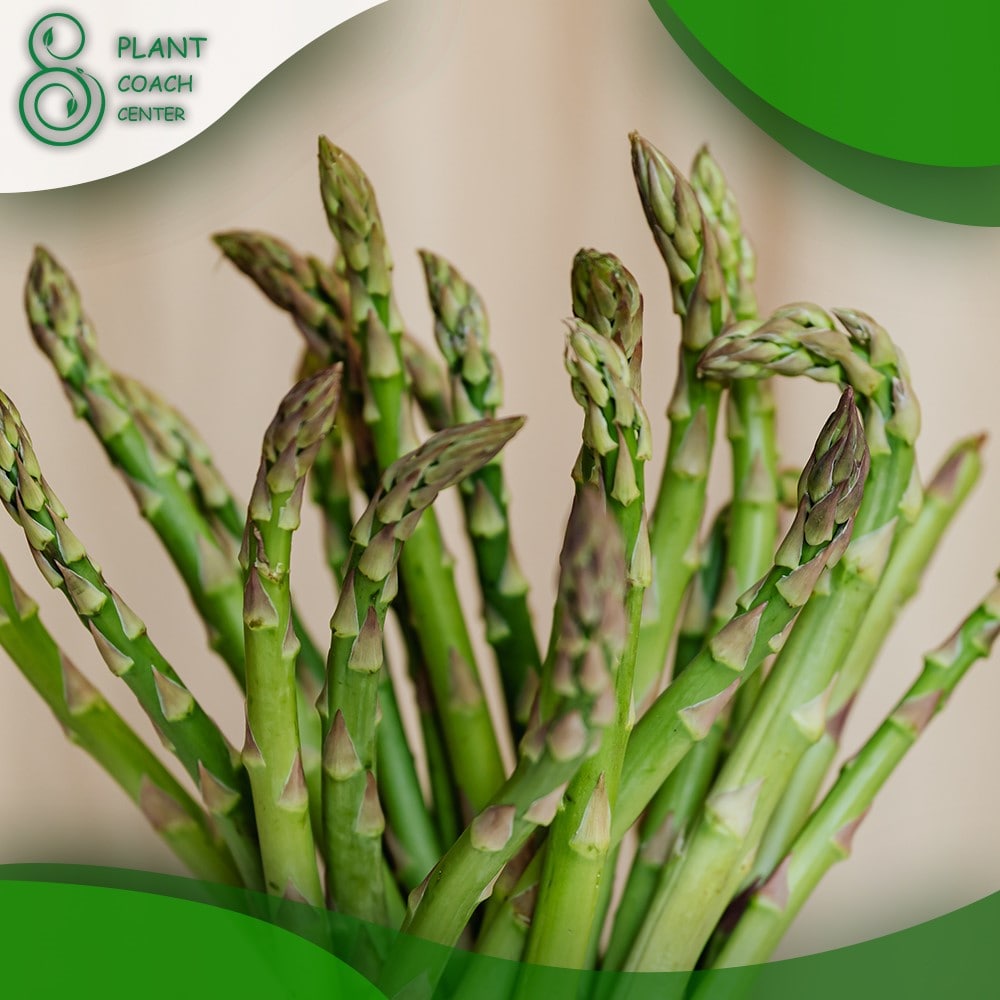When to Cut Down Asparagus?
Welcome to cultivating asparagus, where each succulent spear promises culinary delight. As gardeners and enthusiasts alike, we embark on a journey that’s as much about timing as it is about taste. The art of knowing “When to Cut Down Asparagus” encapsulates a delicate balance between the vibrant anticipation of harvesting at peak flavor and ensuring the longevity of our precious plants.
Picture the moment when your asparagus bed transforms into a tapestry of emerald-hued treasures, standing tall in readiness. But how do we decipher nature’s whispers and decide when the time is ripe? In this exploration, we peel back the layers of plant physiology, seasonal rhythms, and environmental cues, all of which contribute to this pivotal decision.
Join us as we uncover the secrets behind selecting the perfect juncture to snip those tender spears, preserving the exquisite taste and nurturing the vitality of your asparagus patch for seasons to come.
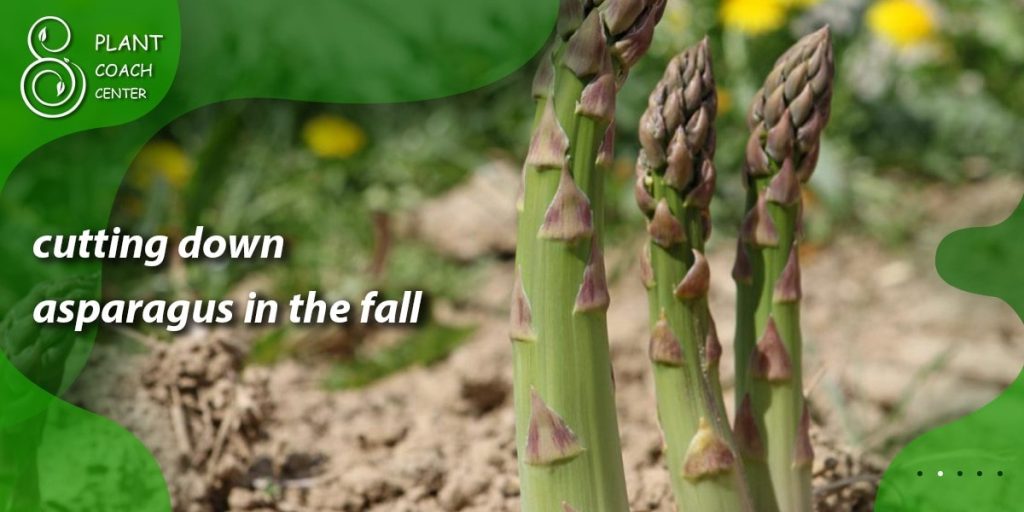
Harvesting Signals: Discovering the Visual Cues
Harvesting asparagus is an art that requires a keen eye and an understanding of the plant’s visual cues. As you stroll through your asparagus bed, watch for the subtle changes that signify the optimal moment for cutting. One of the primary indicators is the size of the spears.
Mature asparagus spears typically range from 7 to 9 inches in height and have a diameter akin to your thumb. These robust spears signal that the plant has stored sufficient energy in its roots, making them prime candidates for harvest.
Another crucial aspect to observe is the color of the spears. A deep, vibrant green hue suggests the asparagus is at its peak. Be cautious of spears that begin to turn pale or yellowish, as these might be past their prime. Moreover, pay attention to the tips of the spears. If they start to unfurl or “fern out,” the plant directs its energy towards developing foliage and seeds. To ensure continued growth and a bountiful harvest in subsequent seasons, it’s best to cut down spears before this ferning occurs.
Texture can also be a valuable clue. Gently touch the spears – they should feel firm and taut, indicating optimal tenderness. If they seem limp or overly woody, it’s a sign that you might have missed the harvest window. By learning to read these visual cues, you’ll be equipped with the knowledge needed to select the asparagus spears at the pinnacle of their flavor and texture.
Remember, harvesting is a rhythmic dance with nature, and being attuned to these subtle signs will elevate your asparagus-growing journey to new heights of culinary satisfaction.
Timing for Optimal Flavor: Balancing Taste and Timing
In the world of asparagus harvesting, the art of timing is intricately woven into the fabric of flavor. The moment you choose to cut down your asparagus spears can significantly influence the taste and tenderness of your culinary creations. Asparagus spears are at their most delectable when they are harvested at just the right juncture, balancing the plant’s growth cycle with the desires of your palate.
The journey to optimal flavor begins with understanding the growth process of asparagus. Early in the season, the plant focuses on establishing its root system and building up energy reserves. As the days progress and temperatures rise, the asparagus begins to send up its tender spears. This is the pivotal moment to strike, as the sugars and nutrients stored in the plant are channeled into these nascent growths. Harvesting during this period ensures that you’re capturing the pinnacle of flavor concentration.
Yet, there’s a narrow window for this perfection. Delaying your harvest even by a day or two can result in a remarkable change in taste. As the plant diverts its energy towards ferning – producing foliage and seeds – the sugars in the spears convert into starches, leading to a tougher texture and a less sweet taste. Thus, the delicate interplay between sugars, starches, and timing dictates whether your asparagus dish will be a culinary triumph or a missed opportunity.
By honing your maestro of taste ability to gauge this intricate balance, you become this knowledge, and you’ll be able to create dishes that celebrate the symphony of flavors that asparagus can offer when it’s harvested at its peak. So, as you stand before your asparagus patch, remember that timing isn’t just about convenience – it’s about savoring the season’s essence in each succulent bite.
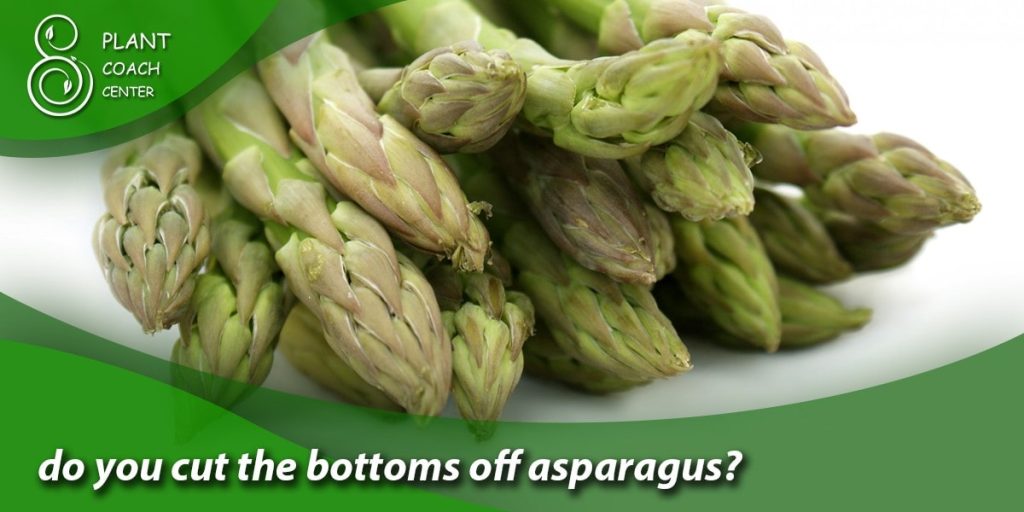
Stalk Length Matters: The Right Height to Cut
When it comes to harvesting asparagus, precision is paramount, and that includes knowing the optimal height at which to cut the spears. The length of the stalk plays a crucial role not only in the immediate harvest but also in the long-term health of the plant. Imagine each asparagus spear as a masterpiece of nature’s engineering, with a balance between what’s above the soil and what’s beneath it.
As you survey your asparagus bed, aim to harvest spears around 7 to 9 inches in length. This measurement is a sweet spot that ensures you’re harvesting spears at their peak tenderness and flavor concentration. To accurately gauge the height, use a ruler or a marked garden tool to measure from the soil level to the tip of the spear. Cutting too early, when the spears are shorter, might result in a less satisfying taste, while waiting too long can lead to more manageable and woody textures.
Beyond the immediate gratification of a delectable dish, the height at which you cut the spears can have lasting effects on the asparagus plant itself. By leaving a portion of the spear above the soil – roughly 2 inches – you ensure the plant has enough leaf surface to photosynthesize and generate energy for future growth. This strategic trimming also prevents undue stress on the plant, as cutting too close to the base can hinder its ability to store energy for the following season.
Mastering the art of stalk length, you’re orchestrating a harmonious relationship between present satisfaction and future abundance. Each precisely cut spear not only graces your table with culinary delight but also paves the way for robust growth and continuous yield from your asparagus patch. So, as you wield your harvesting tool, remember that the right height to cut isn’t just a measurement; it’s a promise of asparagus excellence in every harvest to come.

Seasonal Considerations: Navigating the Asparagus Growth Cycle
Asparagus, a perennial gem in the garden, dances to the rhythm of the seasons, offering distinct harvest opportunities in both spring and fall. Understanding the nuances of each season’s impact on your asparagus patch can guide you in making the most of this vibrant plant’s growth cycle.
Spring Harvest
Spring is the prime season for asparagus harvesting, offering fresh flavors after the dormant winter months. As the soil warms and daylight hours lengthen, the asparagus crowns awaken from their slumber. This is when the first tender spears emerge, signaling the commencement of the harvest season. Spring asparagus is renowned for its succulence and sweetness, thanks to its energy allocation towards new growth.
Fall Harvest
While less common than spring harvesting, fall offers its allure for asparagus aficionados. As the growing season wanes, the asparagus plants prepare for the colder months by redirecting their energy downward into their roots. This energy storage makes the spears that emerge in the fall a unique and flavorful delight. The cooler temperatures also contribute to the asparagus’ characteristic tenderness.
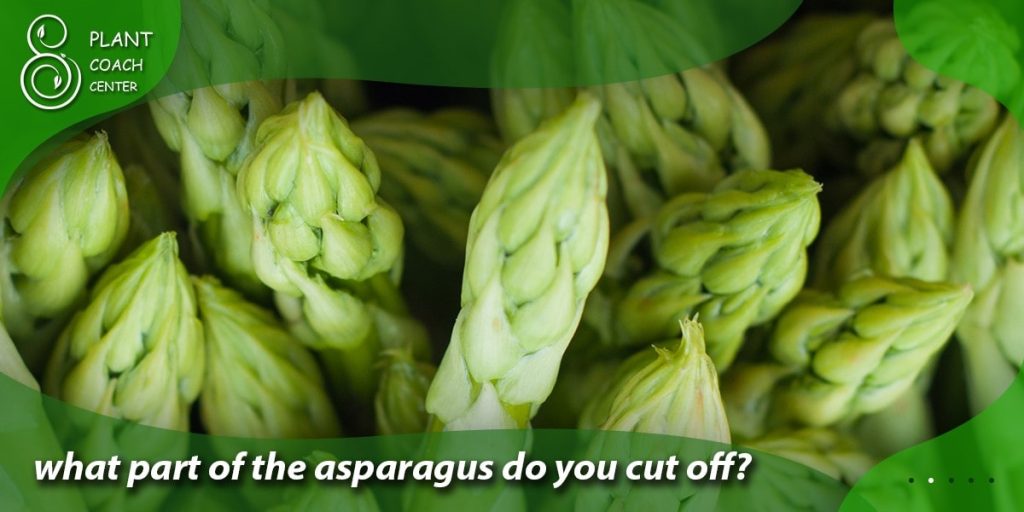
Post-Harvest Plant Care: Ensuring Long-Term Productivity
Harvesting asparagus is not just about the immediate satisfaction of a delicious meal; it’s also an investment in the future of your asparagus patch. Post-harvest care is a pivotal step in maintaining the vitality and productivity of your plants, ensuring that they continue to thrive and provide bountiful harvests for years to come.
Clearing Debris
After you’ve harvested your asparagus spears, clearing away any debris, cut stems, or ferns that might have accumulated in the bed is essential. This keeps the area tidy and minimizes potential hiding spots for pests and diseases.
Fertilization
Asparagus plants are heavy feeders, so replenishing the soil with nutrients after harvest is crucial. Apply a balanced fertilizer or compost around the base of the plants to provide the necessary nutrients for future growth.
Watering
Continue to water your asparagus bed regularly, ensuring the soil remains consistently moist. Adequate hydration supports root development and encourages energy accumulation for the next growing season.
Fern Management
Allow the remaining asparagus spears to grow into ferns. These feathery fronds are the plant’s way of converting sunlight into energy for storage. They contribute to the plant’s overall health and vigor as they mature.
Pest and Disease Prevention
Regularly inspect your asparagus plants for signs of pests or diseases. Early intervention can prevent potential issues from escalating and harming your plants.
Mulching
Apply a layer of organic mulch around the base of the asparagus plants. Mulch helps retain soil moisture, regulate temperature, and suppress weed growth.
Winterization
As winter approaches, cut down the ferns once they have turned brown and died back. This prevents them from becoming a haven for pests and diseases during the colder months.
Weather and Environment Impact: External Factors in Harvest Timing
In the intricate dance between humans and nature, the weather and environment take center stage as partners that shape the timing of the asparagus harvest. These external factors significantly determine when the moment is just right to snip those verdant spears from the earth. As you step into your asparagus patch, consider the following influences that weather and the environment can have on your harvest timing.
Temperature Fluctuations
The rise and fall of temperatures significantly impact the emergence of asparagus spears. Warmer temperatures stimulate growth, prompting spears to shoot up, while cooler periods can slow growth. Being attuned to temperature trends can guide you in predicting when the prime harvesting window might open.
Soil Moisture
Adequate soil moisture is vital for healthy asparagus growth. A dry spell can hinder spear emergence, while consistently moist soil supports robust development. Keep an eye on rainfall patterns and supplement irrigation as needed.
Sunlight Exposure
Asparagus plants are sun-worshippers, relying on sunlight to generate energy for growth. A sunny spell following a rainy period can encourage rapid spear growth, indicating that the time for harvest might be approaching.
Microclimates
Your garden might have microclimates – small areas with slightly different conditions – that affect the growth of your asparagus. These can result from nearby buildings, trees, or bodies of water. Be mindful of how these microclimates influence the emergence and development of your spears.
Seasonal Shifts
Different seasons bring distinct weather patterns that influence the timing of asparagus growth. Spring rains can trigger spears to emerge, while fall’s cooler temperatures can slow down the process. Understanding these shifts helps you align your harvesting schedule with the broader environmental context.
Local Climate Variability
If you’re in a region with variable climates, such as coastal areas or mountainous regions, the timing of asparagus growth might differ from more consistent temperatures. Local climate patterns can provide valuable insights into when to expect optimal spear emergence.
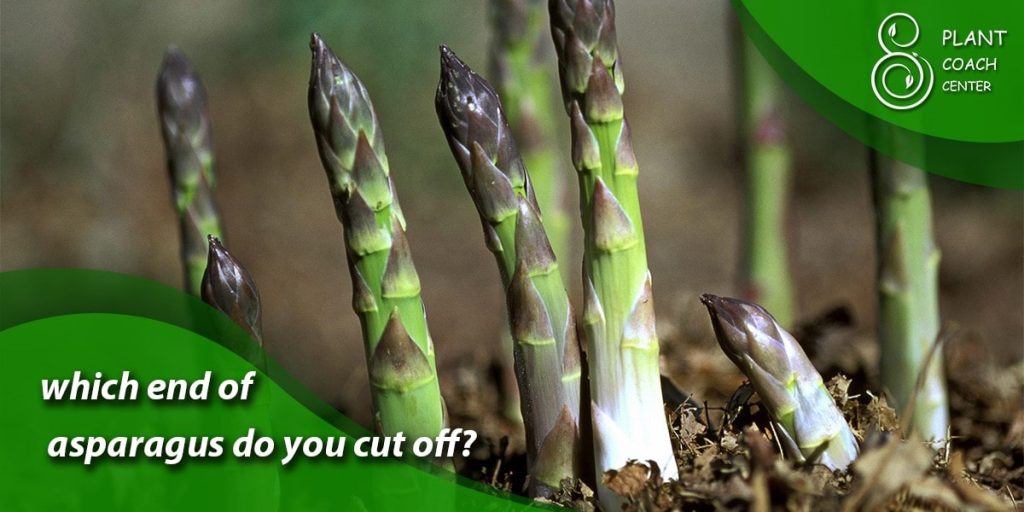
Extending the Harvest Window: Prolonging Your Asparagus Yield
As the saying goes, good things are worth the wait. When it comes to asparagus, extending the harvest window is a strategy that allows you to savor the rewards of your efforts over an extended period. By employing thoughtful techniques, you can prolong the season of asparagus delight and ensure a continuous supply of succulent spears. Here’s how to make the most of your asparagus patch to enjoy its bounty for as long as possible.
Selective Harvesting
Rather than harvesting all the spears at once, opt for selective harvesting. Choose only the most giant and mature spears while allowing smaller ones to grow further. This strategy prevents exhausting the plant’s energy and provides for subsequent harvests.
Multiple Plantings
Consider staggering your asparagus plantings with a consistent supply of spears throughout the growing season. By having early, mid-season, and late varieties, this approach ensures that there’s always a batch of spears at its peak for harvest.
Managing Growth Rates
You might notice varying growth rates among individual plants within your asparagus bed. Harvest spears from the faster-growing plants while leaving the slower ones to develop. This approach maximizes the yield potential of each plant.
Fertilization Timing
Adjust your fertilization schedule to encourage staggered growth. Providing a boost of nutrients to specific areas of your asparagus bed can influence the growth rate of different plants, extending the overall harvesting period.
Encouraging Regrowth
After the initial harvest, asparagus plants continue to send up new spears. If you harvest early and leave a portion of the spear above the soil, these cut spears can regrow into additional harvest-worthy spears. This regrowth can extend your harvest season.
Cool Storage
If you’ve harvested more asparagus than you can consume immediately, you can prolong its freshness by storing it in the refrigerator. Wrap the spears in a damp paper towel and place them in a plastic bag to maintain moisture.
Conclusion
As we’ve explored the art and science of knowing “When to Cut Down Asparagus,” we’ve uncovered a world of nuances that elevate this humble plant to a culinary masterpiece. From deciphering visual cues to navigating seasons of weather and nurturing post-harvest care, every step in the journey contributes to the symphony of flavors that grace our tables.
By extending the harvest window through mindful techniques, we become co-creators in nature’s vibrant tapestry, ensuring that the asparagus patch yields its treasures over time. So, whether you’re a seasoned gardener or a budding enthusiast, the wisdom of knowing when to harvest isn’t just a skill – it’s an ode to the beauty of synchronization between nature’s rhythms and our desires.
As you embark on your asparagus adventure, remember that for more expert guidance and inspiration, PlantCouchCenter.com stands ready to nurture your passion for all things botanical.
When should I harvest asparagus?
Harvest when spears are 7-9 inches tall, firm, and vibrant green.
Can I extend the harvest season?
Yes, staggered planting and selective harvesting can extend the season.
How does weather affect harvest timing?
Warmer temperatures prompt growth; observe temperature trends for optimal harvesting.


